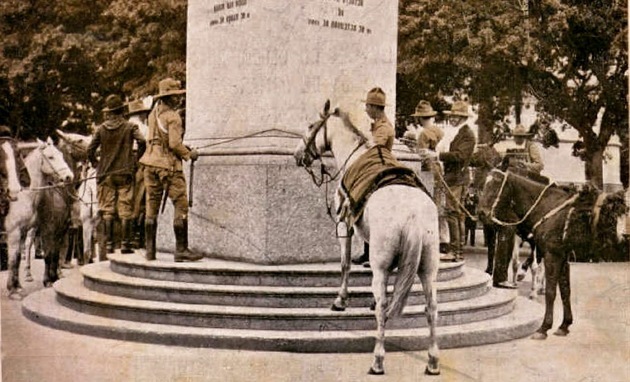Youth represents possibilities for changes and innovations in society. In the 60s and 70s, young people from all over the world started a phase known as the movement of Counterculture. Taking advantage of the changes that humanity was going through, such as the decolonization of Africa and Asia and, especially, the explosion of May 1968, in Paris, the world's youth inaugurated an era of rebellion and detachment material.
The main feature of the movement of counterculture it was the profound criticism of the capitalist system and the patterns of unbridled consumption. Young people who integrated this movement to contest the moral and aesthetic values of global society promoted revolutions in their ways of dressing. Their clothes and hairstyles became symbols of this parallel universe that they designed to break with the capitalist fashions of the elites.
Rock festivals, drug use and posture underground they affirmed the identity of these young people who, through art and music, showed their positions and their alternatives in life. Musicians like Jimi Hendrix and Janis Joplin sang the anthem of struggle for a more poetic and less uncertain world. These contesting movements arrived in Brazil giving rise to the group called “
Tropicália”, which featured artists such as Gilberto Gil, Caetano Veloso and Tom Zé.This musical movement in Brazil greatly innovated Brazilian popular music, bringing in its lyrics irreverent verses that broke with the type of music made until then. In their clothes and styles there was also the influence of the hippie style that challenged society's elitist standards. Brazilian cinema, with filmmaker Glauber Rocha, contributed to the birth of the so-called New Cinema, in which the films criticized poverty and social inequalities in Brazil.
Do not stop now... There's more after the advertising ;)
It is also important to mention the important role that writer José Agrippino played in the dissemination of revolutionary ideas through his works, as he portrayed central themes about some characters, such as Che Guevara, synonymous with ideals socialists. These innovations further inspired Brazilian artists, as was the case with music poet Raul Seixas, who shouted to the world verses like “Long live the alternative society”, exciting the emergence of bands in rock and roll in Brazil from the 1980s. Thus, other hymns were sung on Brazilian soil criticizing themes related to politics and social inequality, as in the cases of the bands Legião Urbana, Paralamas do Sucesso, Titãs, etc.
In this sense, counterculture would be a way of contesting the elitist standards in force in the world. The priority of the young people who spearheaded these ideals was to create new ways of living and new styles that would differentiate themselves from the erudite models of the ruling classes. In Brazil, therefore, there were representatives who released their voice through their art, as a way of creating, above all, another culture outside the dominant standards.
*Image credits: Benjamin Kralj and Shutterstock.com
By Fabricio Santos
Graduated in History
Would you like to reference this text in a school or academic work? Look:
SANTOS, Fabrício Barroso dos. "Counterculture and Brazilian youth"; Brazil School. Available in: https://brasilescola.uol.com.br/historiab/contracultura-juventude-brasileira.htm. Accessed on June 27, 2021.



